When it comes to research and development, clever minds and an inquiring mind are required - and the Institute for Machine Tools and Factory Management at the Technical University of Berlin is certainly not lacking in either. The IWF will be showcasing some of its projects and the results of its work at GrindTec 2016. Components, tools and a small highlight.
Yes, many companies from all over the world are represented at Grindtec, but it is also a scientific event. The TU Berlin, for example, has done a lot of research into grinding technology and is exhibiting here. And I'm going to take a look at the results they've brought us! Simone Dericks: Hello Mr. Schröer, hello to you! Yes, you're from the University of Berlin. Nikolas Schröer: That's right. From the Technical University of Berlin. Simone Dericks: What are you doing here at the Schleifermesse? Nikolas Schröer: There are many reasons, it's an excellent opportunity to exhibit our research topics and research projects at the trade fair and the world's largest trade fair for grinding technology. And we have the opportunity to present many of the topics we are working on here in various areas. We have just under twelve employees who deal with fine machining and in particular cover classic grinding technology, with classic cylindrical grinding, surface grinding and other processes or tool grinding. And there is also a group that deals with precision and finishing machining.
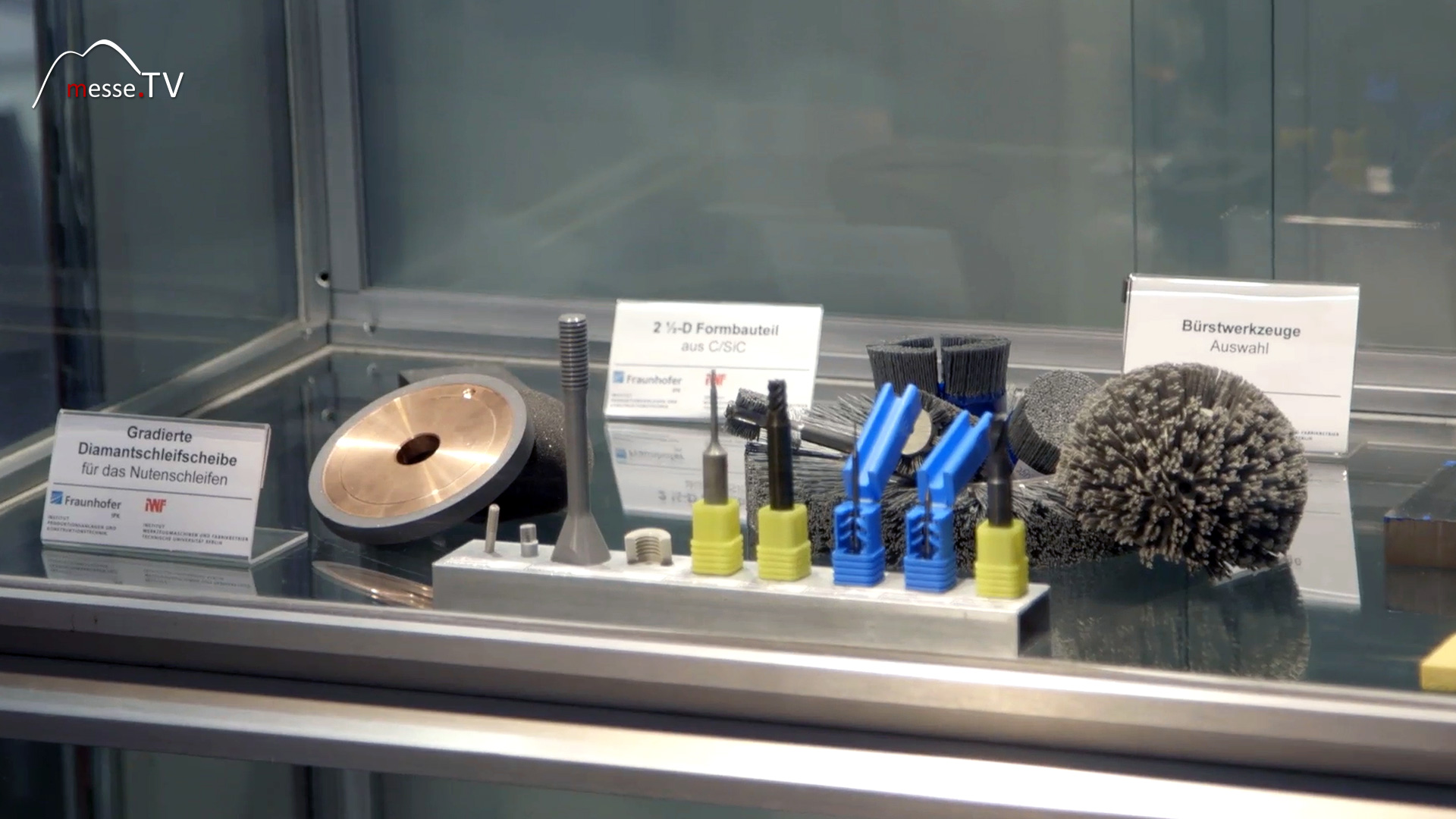
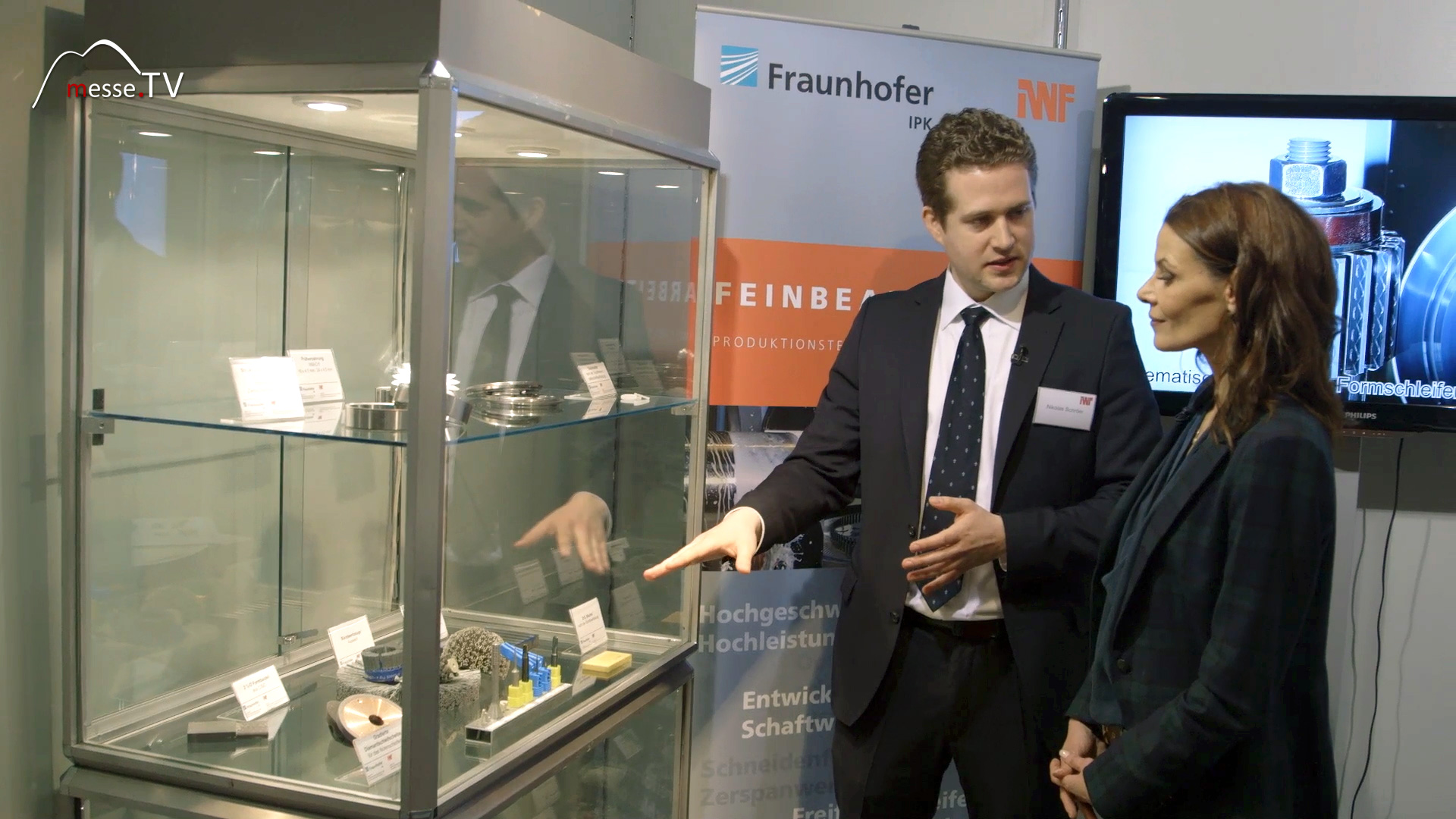
Simone Dericks: Does that mean you only do research or do you also develop? Nikolas Schröer: You could say both. We have the opportunity - because we have a partner institute, the Fraunhofer IPK - to work hand in hand and carry out basic university research on the one hand and application-oriented industrial research in cooperation with the Fraunhofer Institute on the other. In other words, we do both. We work for companies but also with companies. Simone Dericks: Yes, I see that there are also some objects in the display cases that you have developed, among other things. I would like to go over there.
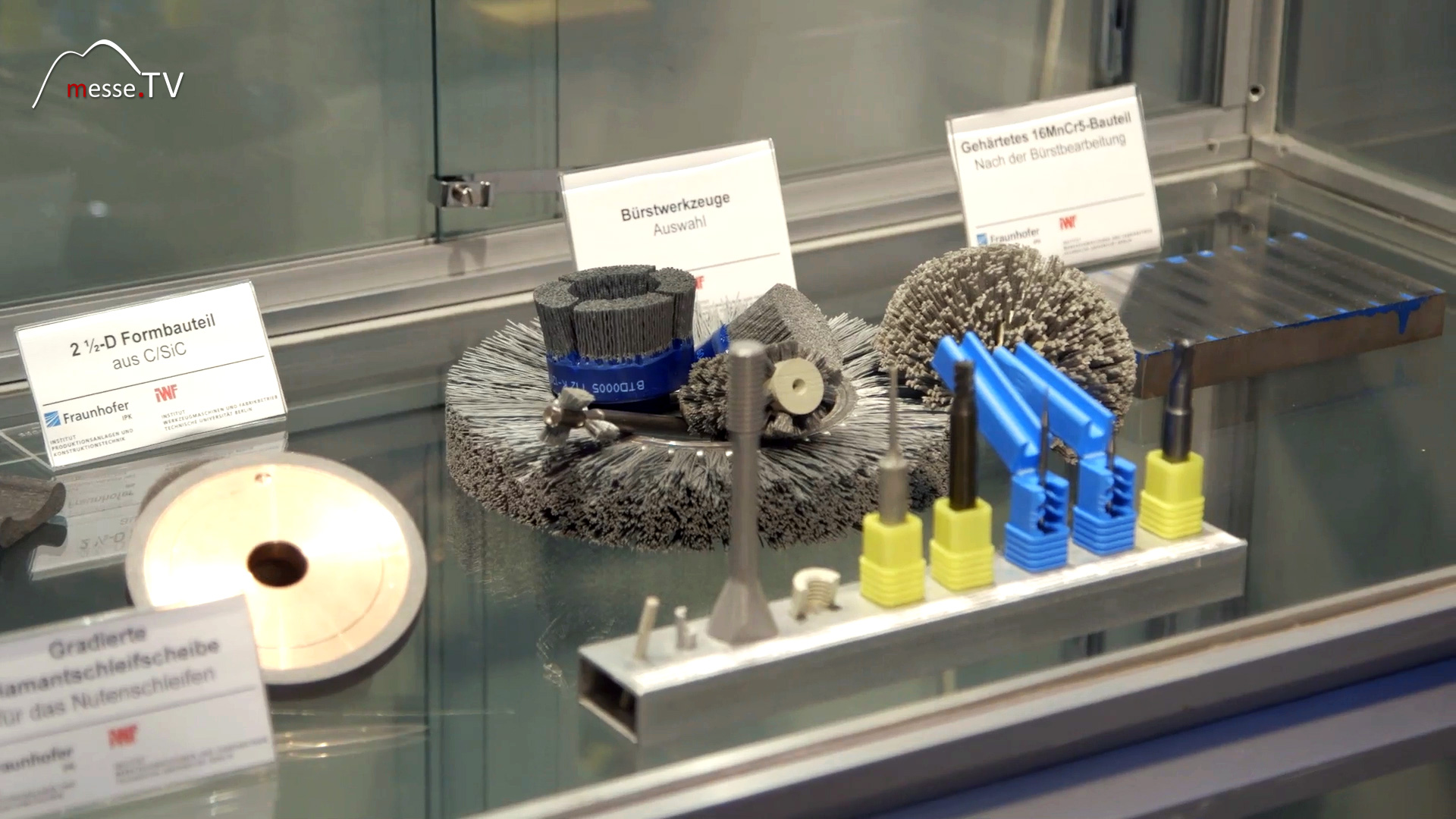
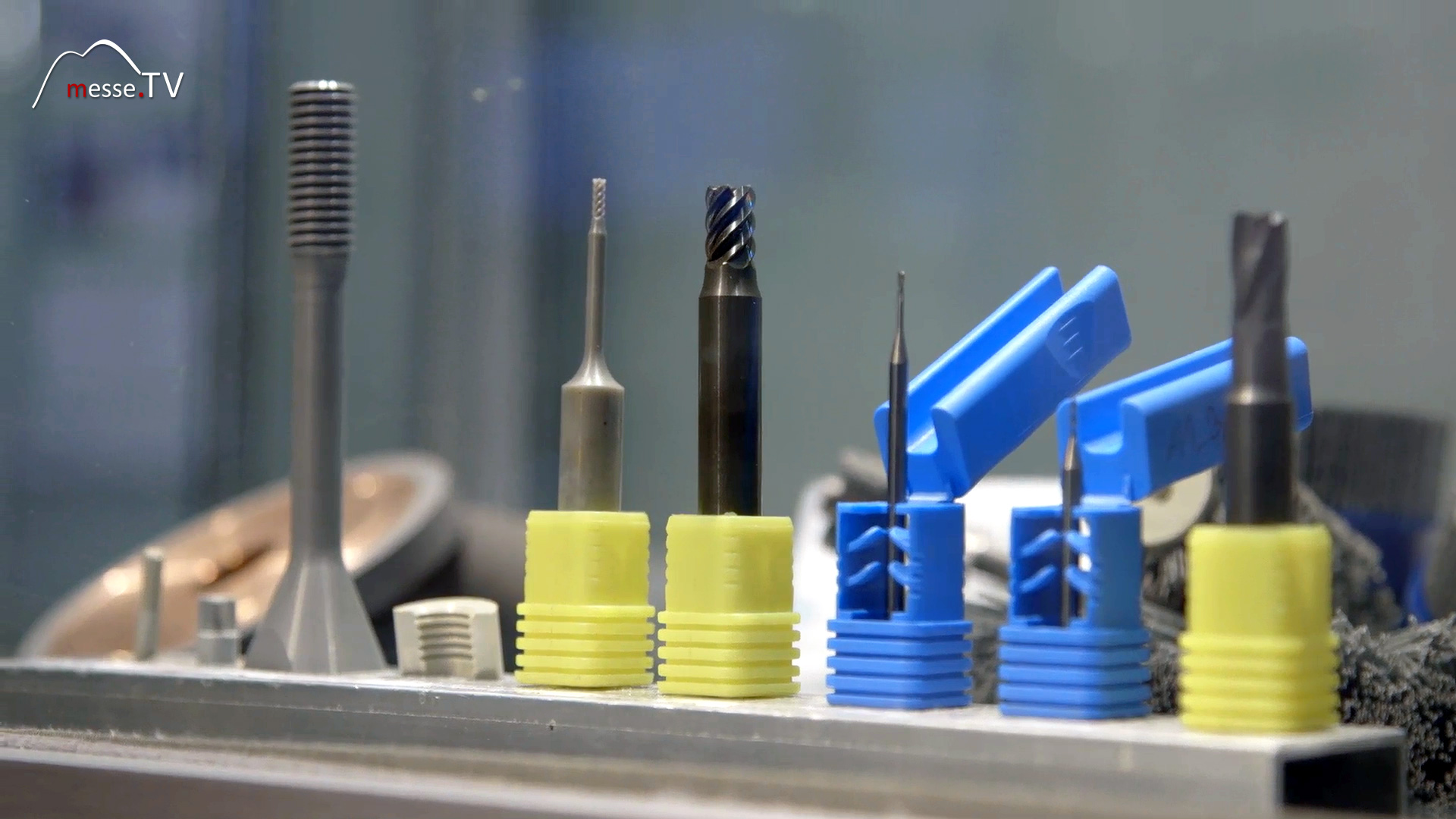
Nikolas Schröer: With pleasure. Here we have a selection of components, tools that reflect a small fraction of what we have been doing recently. Here, for example, is the structured bearing ring. A research project involving kinematic modulated grinding. So they have a certain structure due to the modulated automatic grinding process. Similar to a cylindrical surface, this is intended to ensure that the lubricating effect or the formation of a lubricating film in the process, in the application behavior, is better due to such structuring on this bearing ring. However, the bearing ring is just an analogy component from the process development, which is later to be used on gear wheels or similar, as they are here, to ensure lower noise emissions or less wear of the gear wheels in gearboxes. Then, of course, it is always the ennoblement of a researcher when what has been researched also becomes established in industry, but that remains to be seen.
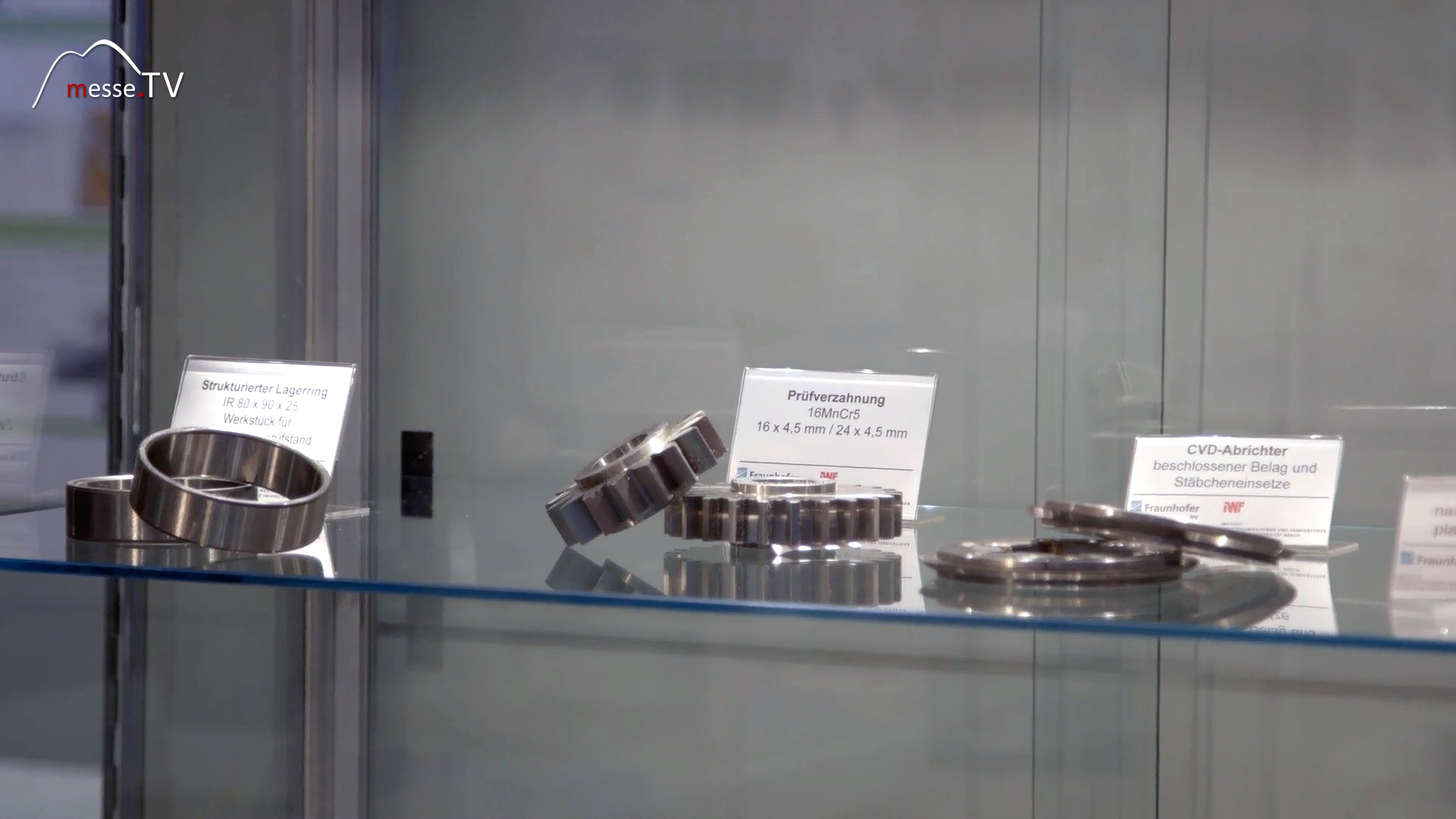
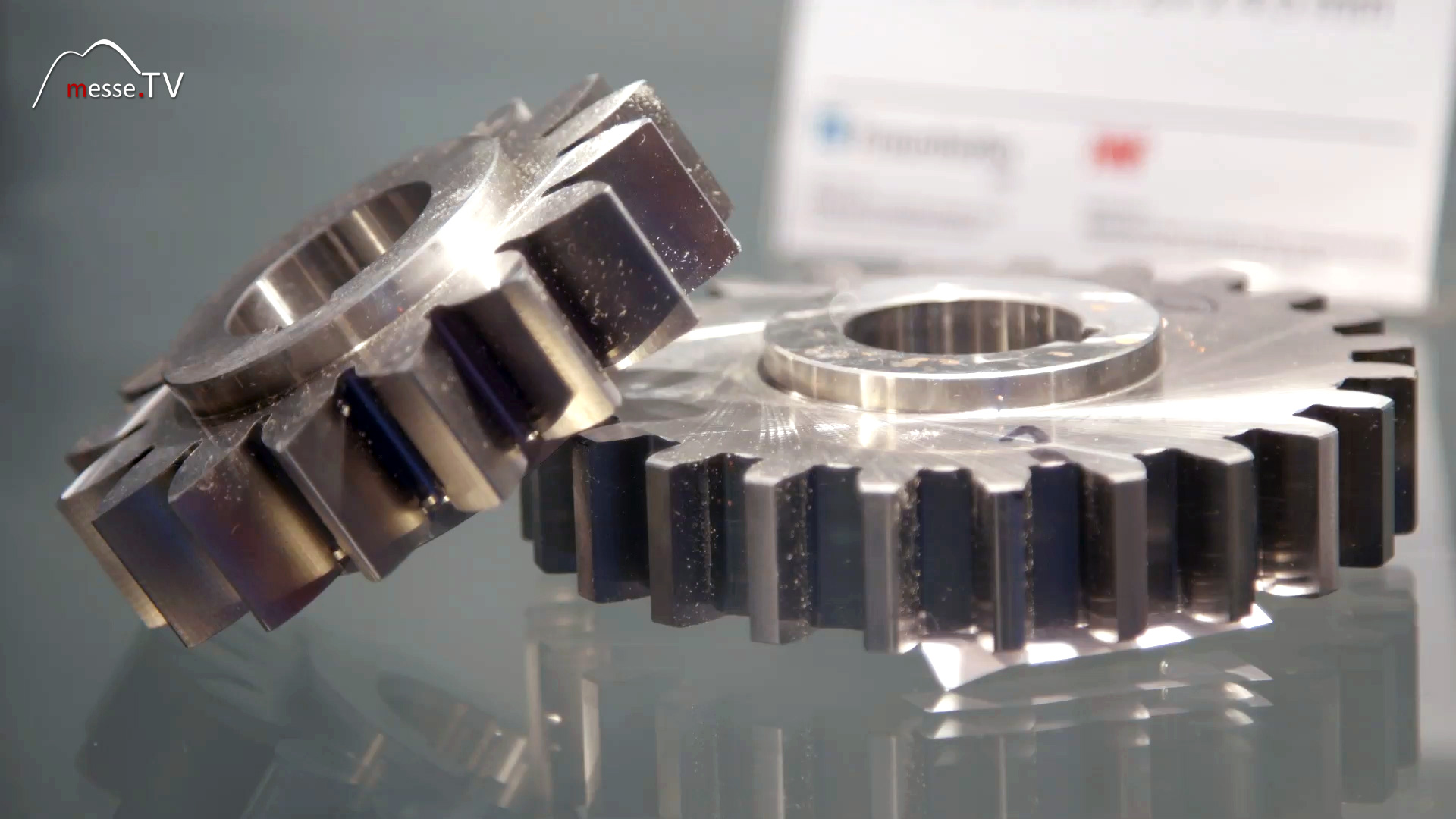
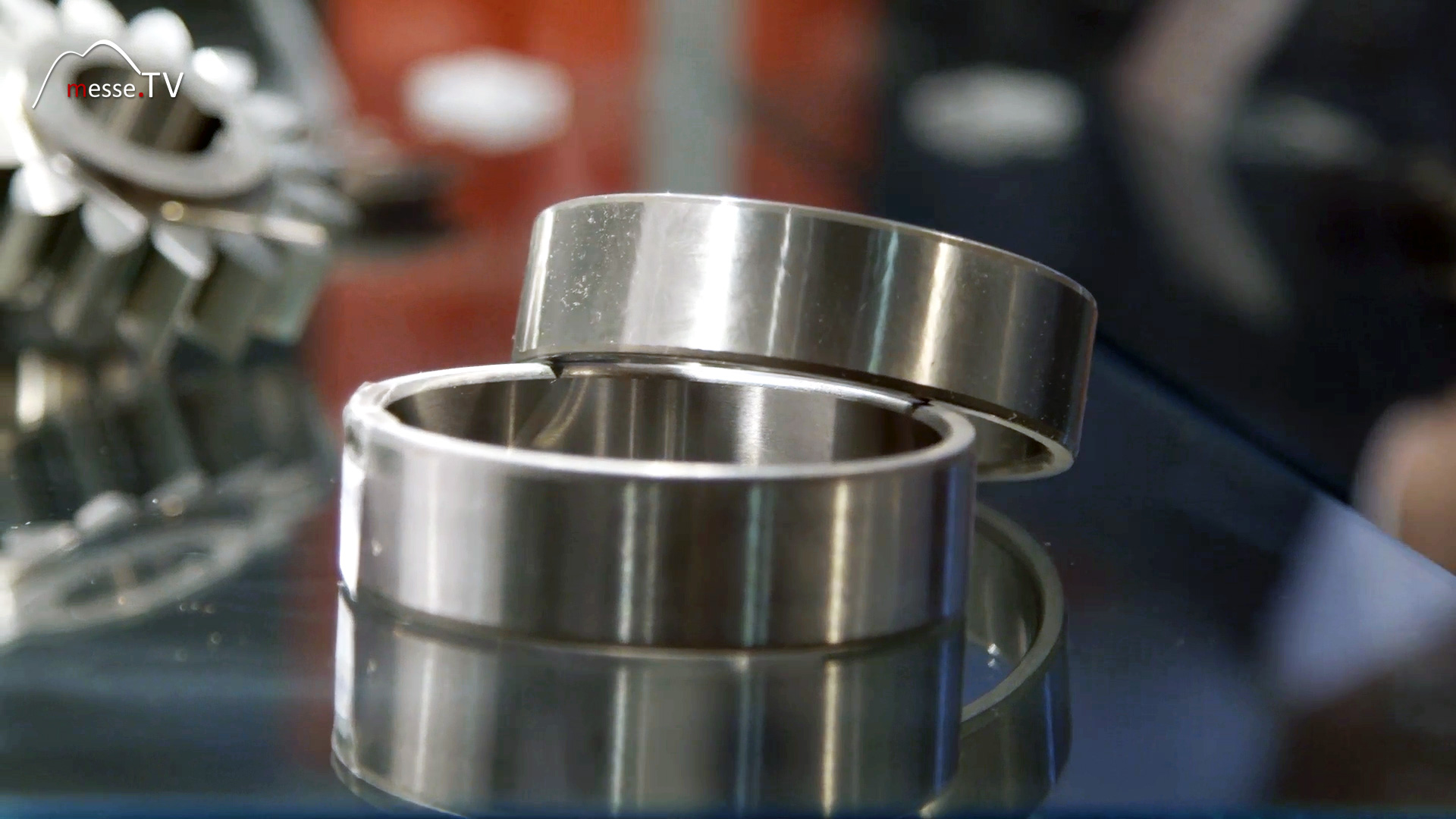
Simone Dericks: Mr. Schröer, I can see a small battalion of milling cutters in front of me. Where do you use them in industry? Nikolas Schröer: The milling cutters are used in a similar way - and this is a great example of how things from research can also be used in industrial applications - because we have developed ceramic milling tools in a research project for machining turbine components made from superalloys such as Inconel. Very difficult to machine and what you need here is a material that is very heat-resistant. This is why we have produced milling cutters from this ceramic and, on the other hand, places high demands on the grinding process that produces these milling cutters. Of course, we have also brought along an eye-catcher that I would like to show you. Simone Dericks: Yes Mr. Schröer, that looks futuristic! What have we got here?
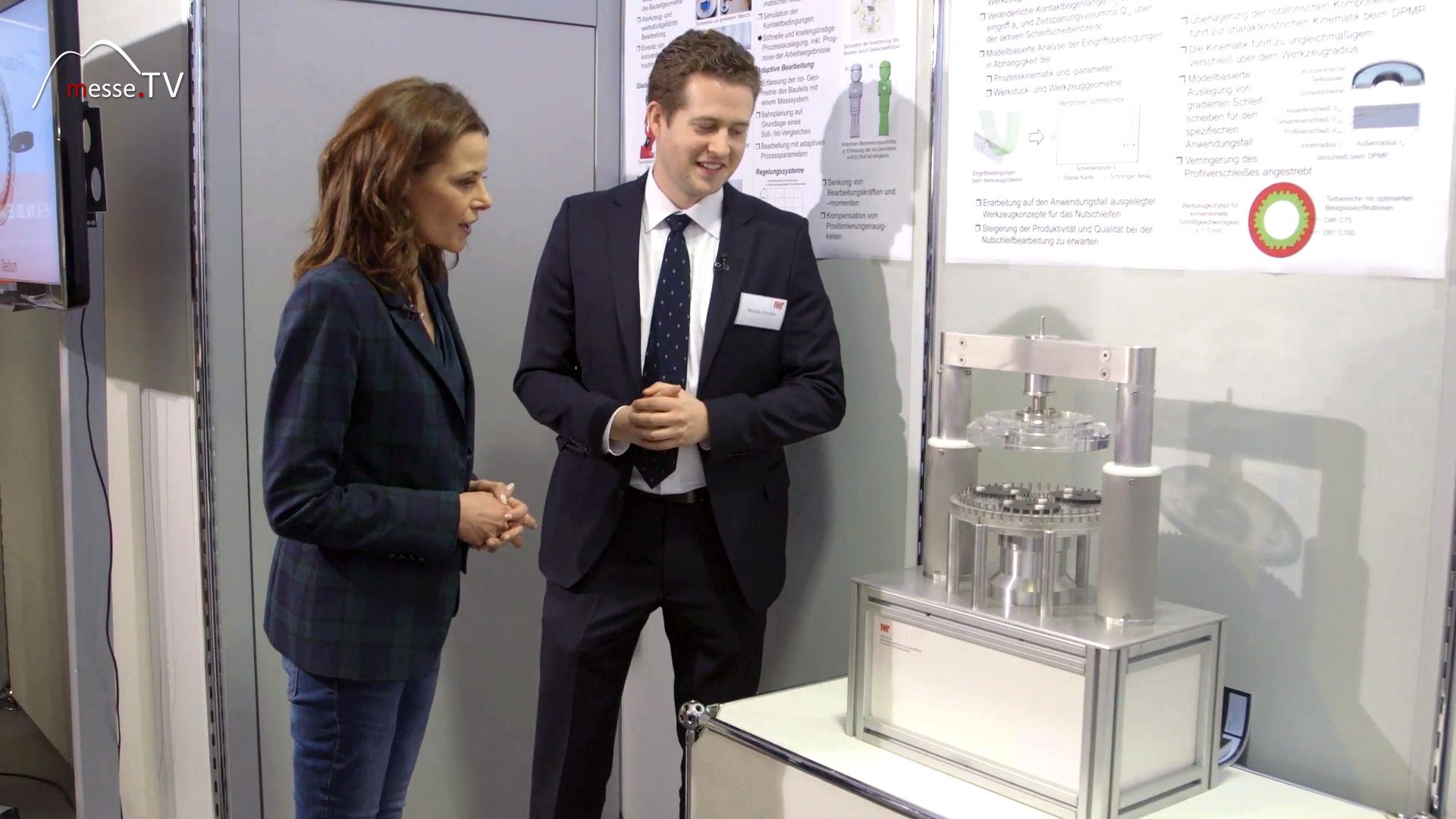
Nikolas Schröer: This is a demonstrator. It is intended to show the process kinematics for double-sided face grinding with planetary kinematics. And for a better understanding, this is a grinding process or rather a small model of a machine that we have at the institute and this machine has process kinematics that are not commonplace - not commonplace even for grinders - and that's why we have brought a demonstrator here to show the kinematics or rather the paths of the components, which are white here above the grinding wheel that is here at the top and bottom. I'll just turn it on. Then you can understand it quite well. Here you can set this planar shape that the parts perform above the grinding wheel using various parameters and this is really just to illustrate this.
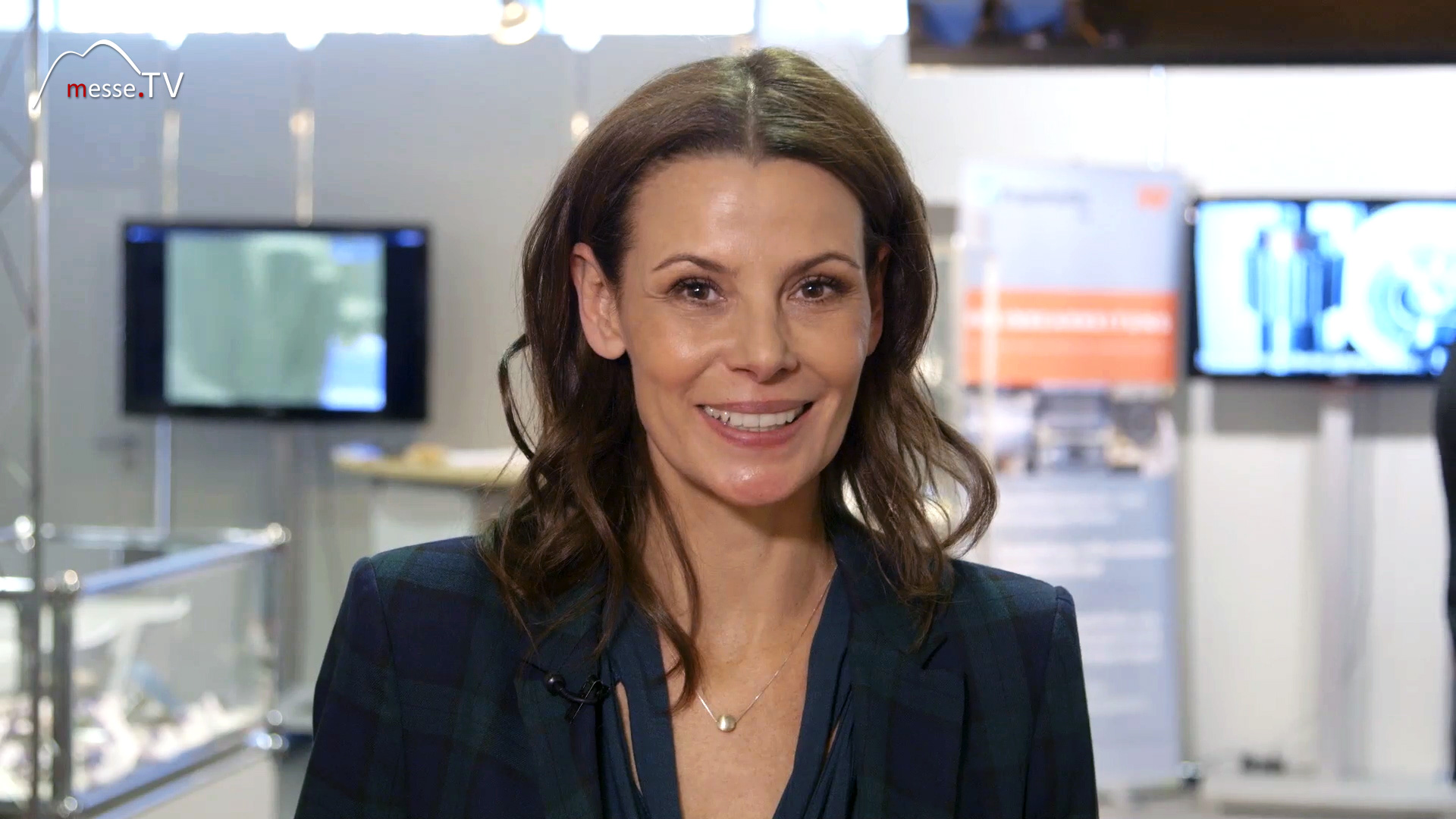
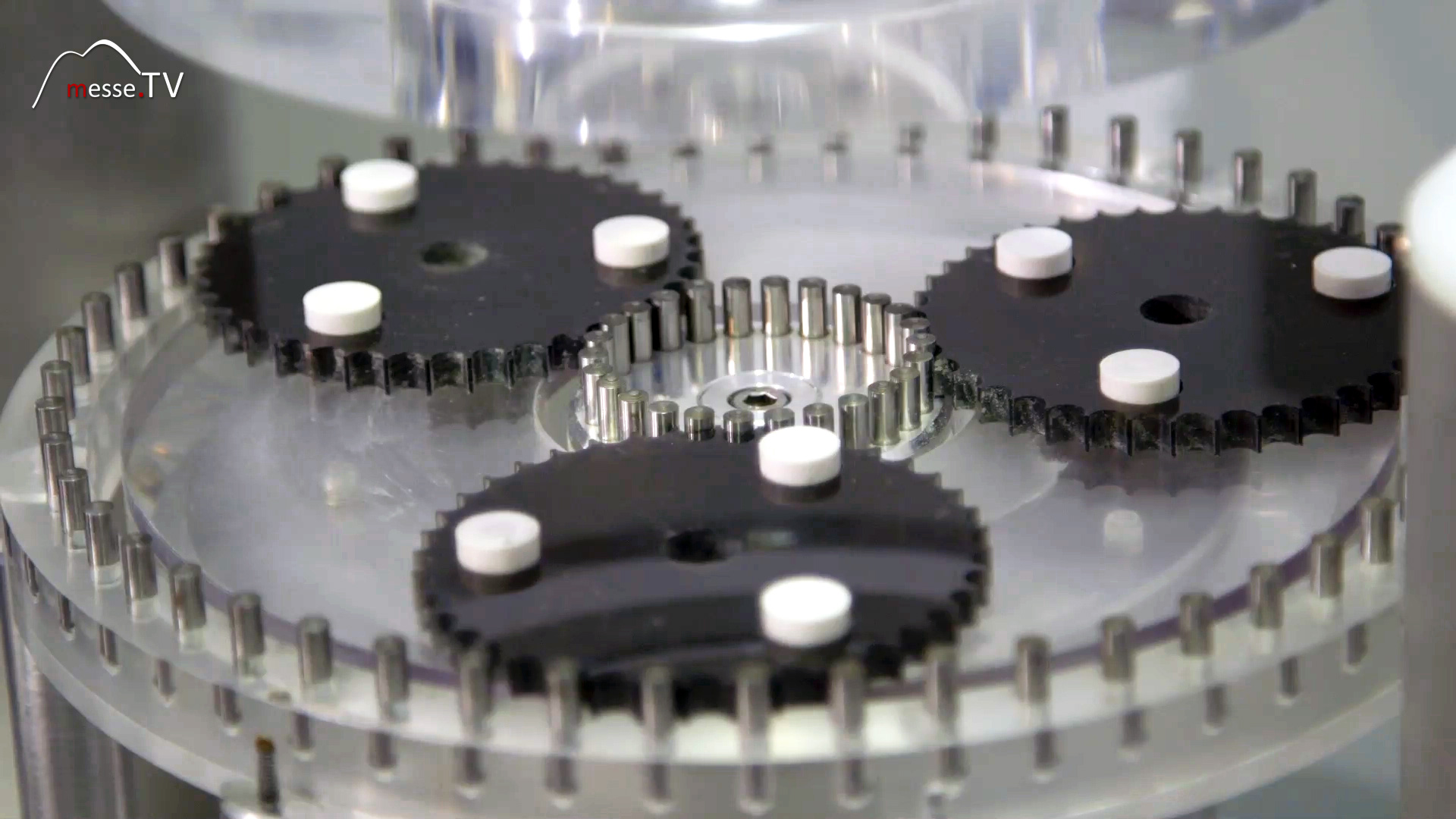
Simone Dericks: Is that a big part of your development now? Nikolas Schröer: Not the machine. Not these kinematics. But we have a lot of exciting topics here on this machine where it's about resonance-optimized machine frames or the machining of very hard components that have to be plane-parallel. Let me give you an example. There are ceramic regulating disks in every water set that are machined on a machine like this and where no faucet would work if these components were not in there. Simone Dericks: Can you tell us what you are currently researching? What you have in store for us in the next few years! Nikolas Schröer: Yes, the future! Of course, we are always on the lookout for strong cooperation partners. But we have a lot of exciting research topics that we will continue to work on in the future. We have focused a bit on various topics at our stand here. One of the topics is grinding tool characterization, which enables us to use new measuring methods to better analyse the complex composition of tools or grinding wheels and see what is inside them? How is it oriented in there? How much of it is in there and so on. In order to be able to derive tool optimization and ultimately process optimization in the best case. Simone Dericks: And then have a successful trade fair! Nikolas Schröer: Thank you. Goodbye. Farewell. End of the interview. Official website of IWF TU Berlin: www.iwf.tu-berlin.de More videos about GrindTec 2016